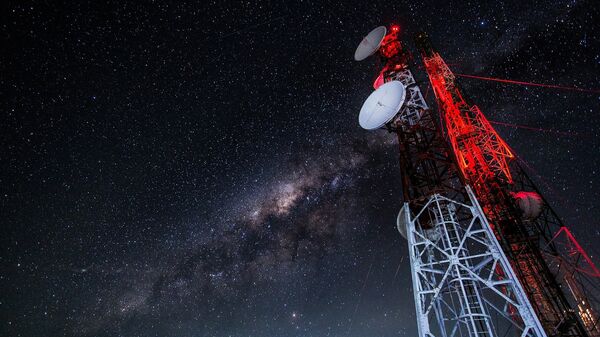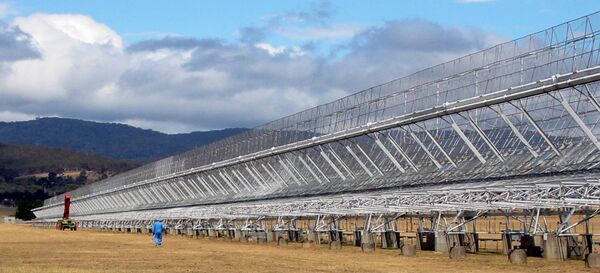Lasting mere milliseconds, FRBs are roughly a billion times more luminous than anything humans can see in the Milky Way, and appear to travel vast distances. However, their origin has baffled astronomers since their discovery in 2007, with several competing hypotheses suggested.
Popular theories include FRBs being the result of a collision between very dense objects like merging black holes or neutron stars, vestigial remnants of gamma-ray bursts, hyperflares of magnetars, black hole explosions, and most excitingly of all, fumes created by the exhaust pipes of alien craft. In this instance, it is suggested the waves emanate from a massive solar engine that utilizes the energy of a star to power spacecraft for interstellar travel.
Fast Radio Bursts present one of modern astronomy’s greatest mysteries: https://t.co/2lS829c0CK pic.twitter.com/lFvTBmtaIg
— Swinburne University (@Swinburne) April 3, 2017
One of the issues inherent in confirming FRBs' source is that determining where the bursts come from is fundamental to understanding, but prior to April 2017 only one burst was linked to a specific region — a dwarf galaxy in the distant Auriga constellation. However, researchers from the Swinburne University of Technology in Australia (SUTA) believe they may have cracked the secret of their derivation.
Chris Flynn, a SUTA researcher, explained that the reason the source of FRBs had proved so tricky to pin down was scientists typically came across them using single-dish radio telescopes, devices which can "hear" much, but provide little perspective on where sounds come from.
"Conventional single dish radio telescopes have difficulty establishing that transmissions originate beyond the Earth's atmosphere," he said.
To overcome the problem, the researchers used the Molonglo telescope, which has a collecting area of around 18,000 square meters (194,000 square feet). This huge gathering span means the telescope is ideal for detecting FRBs — but its architecture also prevents it from detecting any signals coming from within the Earth's atmosphere.
The team set about scouring data amassed by Molonglo for traces of FRBs, no easy feat considering the telescope produces over 1,000 terabytes of data daily. Eventually, three new FRB signals were uncovered in the telescope's data, perfectly matching alleged FRB signals picked up previously — and originating from the same dwarf galaxy, in particular the constellations Puppis and Hydra.
Nonetheless, despite the confirmation of FRBs as real, extraterrestrial phenomena, their source remains relatively mysterious.
"Figuring out where the bursts come from is the key to understanding what makes them. Only one burst has been linked to a specific galaxy. We expect Molonglo will do this for many more bursts," said lead researcher Manisha Caleb.
The Molonglo telescope is now being updated, in the hope it may provide further insight in future — hopefully, even going as far as pinpointing FRB's specific galactic origins. Perhaps they will transpire to be created by aliens after all.




